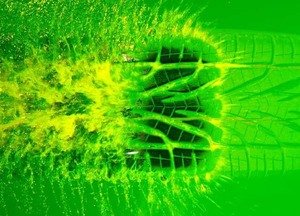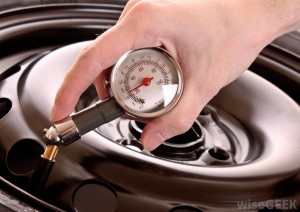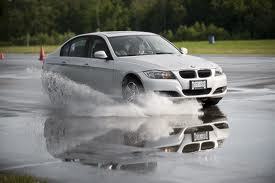The Fuss about Contact Patch of Tires
“Contact patch is the part in a vehicle’s tire that gets in contact with the surface of the road when the vehicle is in motion. It plays a very important role in vehicle performance like handling and speed.“
 Why is the Contact Patch of Tires important?
Why is the Contact Patch of Tires important?
The contact patch is the only connection between the vehicle and the road. Its characteristics (e.g. shape and size), therefore, play a huge role on important handling characteristics and ride qualities of the vehicle.
Tires are flexible so the contact patch is different when the vehicle is static than when it is not. Below, we tackle some important factors related to contact patch of tires.
 Air Pressure
Air Pressure
Inflation and pressure plays a huge role on the contact patch of tires. Statistically, the larger the load on the tire, the larger its contact patch . The higher the inflation pressure, the smaller the contact patch of tires becomes.
These two properties, however, are not perfectly proportional with the contact patch. For example, a 10% change in inflation pressure does not result in a 10% change in the patch. Therefore, altering the load and tire pressure can be done more freely.
Underinflation and overinflation, moeover, should be avoided as it can affect steering precision, cornering stability, and fuel economy. Despite this, tires are sometimes overinflated during competitive road races and track events for improved steering response and cornering stability. This, however, causes less contact patch, a harsher ride and more easily damaged tires.
Handling and Traction
With driver skill and horsepower equal, the vehicle with the most tire traction will be the winner in terms of acceleration, cornering, and braking. Maximizing the performance of those four small patches in contact with the road is the best way of improving tire traction and tire handling is.
Sustaining and reaching maximum traction can be achieved by lessening slippage in the tire. Peak performance of braking, on the other hand, is reached when the tire turns lesser than a 1:1 ratio of the distance traveled. For good acceleration, the tire should travel more than its normal speed. Perfect cornering, on the other hand, involves hitting the right angle of tire slip and proper over steering.
All these can be achieved by improving the contact patch of tires. For maximum grip, a 5% slippage is recommended. When a tire’s contact patch provides this, everything will follow.
 Alignment
Alignment
Wheel alignment refers to the complex suspension angle and tuning tool that influences the way a vehicle’s tires behave. An accurate alignment is necessary for the proper balance and treadwear of tires.
The type of wheel alignment is dependent on how the driver is planning to use his vehicle. For example, cars used for normal purposes only need to follow the preferred recommendations of the manufacturer. Assertive drivers, however, need a recommended performance alignment for maximum tire performance. This also applies for drivers who want to use their vehicles for competition. Maximum negative camber, aggressive toe settings, and maximum positive caster can be used to improve the contact patch of tires and its overall performance.
 Can You Improve the Contact Patch of tires?
Can You Improve the Contact Patch of tires?
While there are definitely ways to improve contact patch of tires, majority of these approaches come with drawbacks.
For example, increasing overall circumference can increase the contact patch of tires. However, the suspension and body of a car is designed to a certain tire circumference only. Trying this tactic can cause problems related to fender well clearance, overall handling & turning radius.
Reducing air pressure is also the same. While it increases contact patch, underinflating can lead to tire failure, internal heat buildup, and reduction in fuel economy.
There are after-market products, however, which may come to aid when used properly. Examples are anti-roll bars, stiffer springs, rear spoilers, and adjustable shocks. For those who have fuel economy as their main issue, using fuel additives that can improve the combustion of fuel within the system is also a good way to achieve it.
About the Author
Tech Guy
Automotive enthusiast, passionate about Jeeps, hot-rods, turbos, performance, efficiency, diesels, fuels, high performance oils, additives and anything with an engine.

